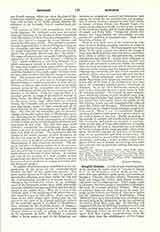

Songish Indians.—A tribe of some importance formerly holding the south coast of Vancouver Island, B.C., in the immediate vicinity of the present Victoria and now gathered upon small reservations at Songhees, Cheerno (Beecher Island), Discovery Island, and Esquimalt, within their former territory, and under the Cowichan agency. Their proper name is Lkungen, the other being a corruption of Stsanges, the name of a former principal division. They are of Salishan linguistic stock and speak the same language as the Sanetch and Sooke of Vancouver Island and the Czalam and Lummi of Washington. From 1000 souls they have wasted away from small-pox and diseases induced by dissipation on the first advent of the whites about fifty years ago. In 1895 they still numbered 215, but by 1910 had decreased to 171, and within another generation will probably cease to exist. Although visited by several of the early voyagers their first regular communication with the whites dates from the establishment of Fort Camosum by the Hudson’s Bay Company in 1843 at the present site of Victoria and close to the village of the principal Songish chief. The secular priest, Father John B Bolduc (d. 1889), already known for his missionary work among the tribes of Puget Sound, had been requested to accompany the expedition, and through his good offices a friendly meeting was arranged with the Indians. On Sunday, March 19, the whole tribe thronged to attend Mass and a sermon, which was held in a temporary chapel, after which over one hundred children were baptized. No continuous work was undertaken until the arrival of the Oblate vicar, Father L. J. d’Herbomez, who established a residence at Esquimalt in 1857 and was joined two years later by several Sisters of Saint Ann. In 1859 the distinguished Oblate missionary Father, Casimir Chirouse, beloved by all the tribes of Puget Sound, arrived from the Columbia Country, and was soon joined by two younger workers of the same order, almost equally noted later, Fathers Pierre P. Durieu and Leon Fouquet. Protestant work was begun by the Episcopalian Rev. John B. Good in 1861. In the meantime the discovery of gold on the mainland had resulted in an influx of miners and dissolute adventurers, which made Victoria a center of dissipation and for a long time virtually nullified missionary effort. In 1862 a small-pox epidemic swept over the whole region and terribly wasted all the tribes. Of the whole number two-thirds are now Catholic, most of the others being Methodists. They are reported as industrious and prosperous farmers, fishermen, and laborers, moral and fairly temperate.
In their primitive condition the Songish had the clan system, with twelve clans, each of which had its own fishing and hunting territory. Chiefship was hereditary in the male line and they had the three castes of nobles, commons, and slaves. Salmon-fishing and berry-picking were the chief dependence for subsistence. They lived in large rectangular communal houses of cedar planks, adorned with carved and jointed totem posts. They had large dug-out canoes of cedar, and wove blankets from dogs’ hair, duck down, and the wool of the mountain goat. They had the potlatch or ceremonial gift distribution, common to all the tribes of the northwest coast. Head flattening was also practiced. There were many curious customs, beliefs, and taboos concerning births, puberty, marriage, and death. The dead were buried in canoes or boxes upon the surface of the ground, or laid away in trees. Slaves were frequently sacrificed at the grave. The names of the dead were never mentioned. As with other tribes of the region their culture hero was the Great Transformer. The religion was animism, each man having his protecting dream spirit, and the tribal life and ceremonial were dominated by two secret societies.
JAMES MOONEY

